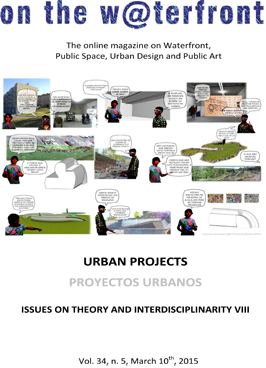FACING URBAN PROBLEMS. THE TEACHING OF INTERDISCIPLINARITY TROUGH THE URBANISM DESIGN STUDIO
Keywords:
Urbanism, urban planning, teaching, interdisciplinarity, projectAbstract
The article focuses on the interdisciplinarity in Urbanism, trough the perspective of teaching, addressing how the project design studios can reinforce the convergence of different areas of knowledge, by facing concrete urban problems.
In this sense, it uses tree case studies of the teaching of Urbanism in Portugal, in the formation of architects and landscape architects, in three different faculties, both on the first and second cycles of studies of the 2013-2014 school year: (1) the 5th year project design studio on the Integrated Master in Architecture, with specialization in Urbanism, at the Faculty of Architecture, Lisbon University; (2) the Urbanism
curricular unit of the 4th year of Landscape Architecture Master, in the Agronomy Higher Institute, at the same university, and; (3) the 1st year project design studio on the Integrated Master in Architecture, at the Beira Interior University.
Developing a practical exercise on concrete territories, the teaching of Urbanism is obliged to face urban problems with different disciplinary approaches. It certainly allows for the development of the disciplinary potentialities, as it should be the objective; but it also confronts the students with the need to interact with other areas of knowledge, in order to find the necessary tools to address these urban questions, some not being central ones on the course plan.
On a complex and multifaceted urban context, as it is the contemporary one,
problems don’t have disciplines. In that sense, the role of the project design studio teacher becomes central to open interdisciplinary horizons, e.g.: (1) coordinating the practical exercise with other curricular units; (2) joining contributions by experts from other areas of knowledge, or; (3) reinforcing the amplitude of the problems students are addressing, both in classes and in the tutorial development of the
exercise.
Published
How to Cite
Issue
Section
License
The
 licence allows: Share — copy and redistribute the material in any medium or format and Adapt — remix, transform, and build upon the material for any purpose, even commercially.The licensor cannot revoke these freedoms as long as you follow the license terms. Author's rights are protected by the ISSN 1139-7365. On the w@terfront has no restrictions respect the copyright by the authors and does allow authors to retain the publishing rights without restrictions.
licence allows: Share — copy and redistribute the material in any medium or format and Adapt — remix, transform, and build upon the material for any purpose, even commercially.The licensor cannot revoke these freedoms as long as you follow the license terms. Author's rights are protected by the ISSN 1139-7365. On the w@terfront has no restrictions respect the copyright by the authors and does allow authors to retain the publishing rights without restrictions.This journal does not apply any type of charge to the authors for the presentation or processing of the articles.







